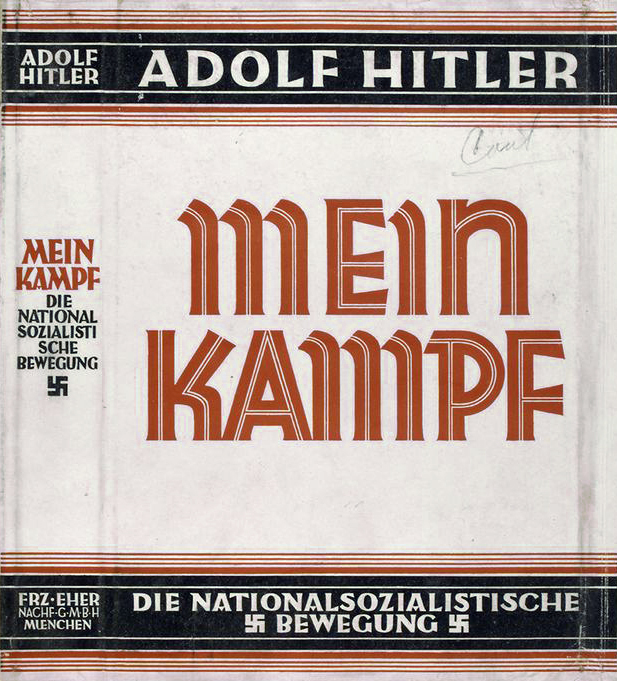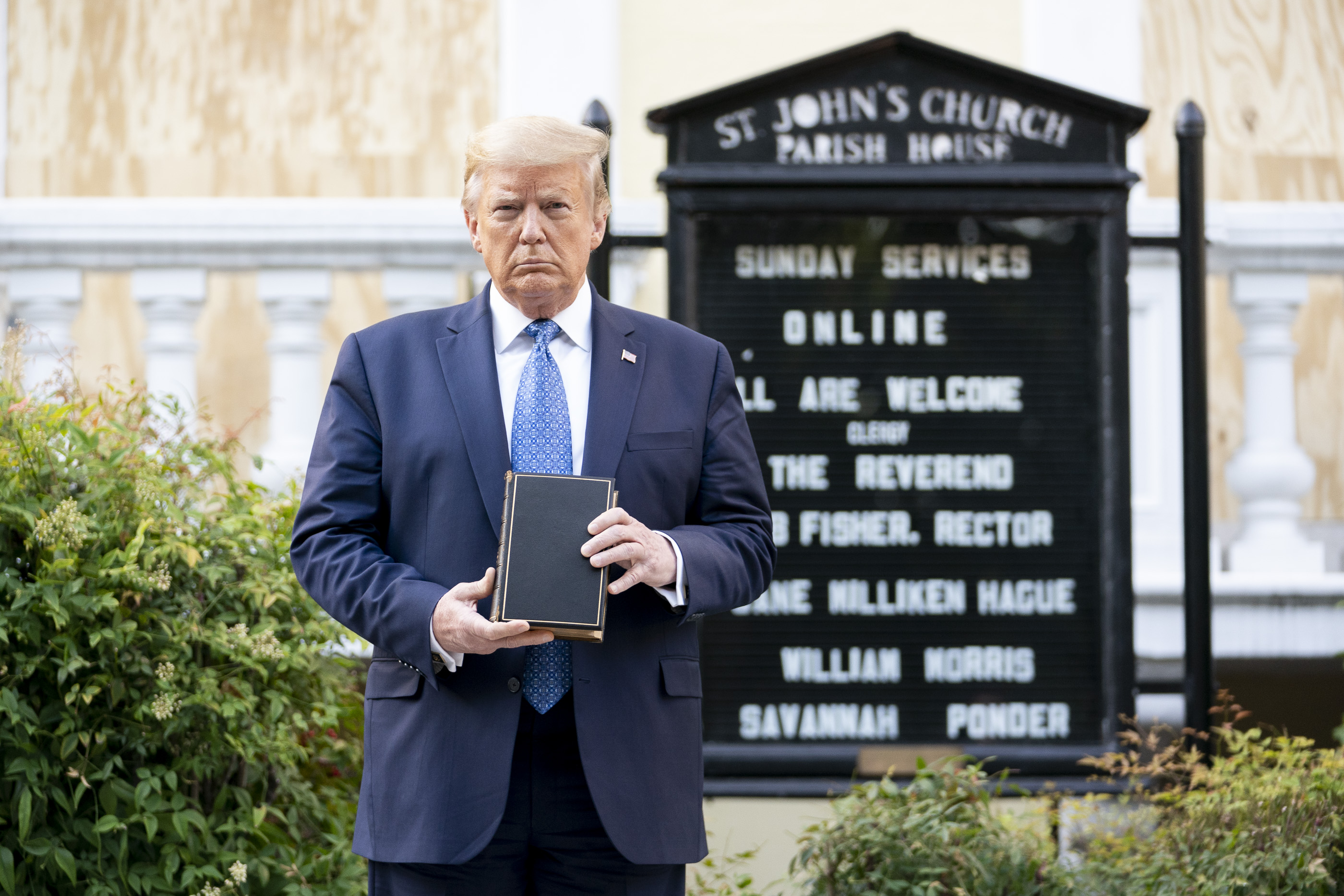To start, allow us to muse the following dystopian and intentionally hyperbolic scenario: at the conclusion of the 2020 US Presidential election in November, Donald Trump loses the electoral college vote to Joe Biden. Yet Trump, undeterred, refuses to cede power to his officially elected competitor. Instead he blames the United States Post-Office – which he claims has engaged in a conspiracy with the Democrats to commit voter fraud- for robbing him of the election. Further, he laments the future of the country if he is to abandon the office. Surely mobs of Antifa thugs will march into the suburbs to loot and riot, China will usurp American hegemony, and illegal immigrants will flood the country to pillage. So Trump declares himself the true winner of the election. The Democratic Party is at a loss for words. The oppositional majority of the country is outraged and panicked. Trump’s conspiratorially minded supporters flock to support him. Europe watches from afar in horror. In Russia, we imagine, Putin lounges back chuckling to himself. The nation is pushed to a point of crisis- who does the military side with? How can the rule of law be enforced when the executive chooses to ignore it? In the midst of adjudicating these questions, Trump’s more heavily armed supporters seize upon a moment they have fantasized about for years – the militias, extremist groups, gun loving Far-Right Americans, and even the hate groups he has enabled come out of the woodwork to support his cause. How could the country reach such a catastrophic moment?
In 2011, the esteemed John Hopkins University political theorist William E. Connolly published a blogpost for The Contemporary Condition, in which he introduced the term “aspirational Fascism”. At the time, observers of the Far-Right in American politics could be forgiven for finding the combination of ‘aspirational’ and ‘Fascist’ dubious. Since the 1980’s the American Far-Right has been composed of approximately three pillars. First, it found quite real success by pushing Evangelical Christianity and Neo-Conservatism to the mainstream of the Republican party to secure electoral victories for both the Reagan and Bush Administrations. Second, scholars warned of (and were mostly ignored about), a growing extremist and conspiracy-theory driven Libertarian movement. While finally, the markedly Fascist Neo-Nazi and Skinhead movement consistently loomed at subterranean depths. What emerging conjuncture then, did Connolly perceive on the horizon as warranting the moniker of both ‘aspirational’ and ‘Fascist’ in the contemporary American Far-Right?
Take the latter term first. Connolly’s 2011 blogpost suggests the following manifestations (along with a few others that we will omit here): While Nazi Germany had villainized Jews, a growing nativist movement gripped by the paranoia of the War on Terror would point towards Muslims as the proverbial ‘enemy’ of the nation, again positioning a disenfranchised population to receive the projection of White ethno-nationalist anxiety. There would be a media push to condemn Socialists, the LGBQT+ community, the intelligencia (especially Feminism) and immigrants of all sorts. Spread by a popular and propagandist media, the dissemination of this rhetoric would be comparable in strategy to historical Fascism (more on this later). The voting rights of minorities would be increasingly curbed, while the institution of democratic elections and party competition are formally upheld. Finally, the military apparatus would be strengthened, and vigilante groups would emerge more openly into the spotlight, aided and abetted by covert alliances with state and police forces.

Connolly followed up the blog post with a short book published in 2017, titled “Aspirational Fascism: The Struggle for Multifaceted Democracy Under Trumpism”. The book elucidates a historical comparison between the rhetorical strategies of Hitler’s Nazism and its influence on the strategy of the early Trump administration. In the following sections of the essay, we return to Connolly’s analysis as a point of departure for some comparative comments about the present conjuncture in the US. Considering Connolly stated that his study was written in haste and is incomplete, our goal is to reflect on how his theses have held up given the events of the last 3 years, and significantly, the preceding summer of unrest. We hope that by continuing Connolly’s theorization of aspirational Fascism into the present we can draw further comparisons that might have remained obscured. Yet, we do not wish for this essay to be interpreted as our glorifying Connolly’s foresight (there is no “I told you so” patronizing to be found here). Rather, looking through his lens, we believe, articulates a cognitive map for the recent developments in the US, from militants “guarding private property” with assault rifles, to voter repression through the defunding of the postal service, and the vilification of the media and differently-minded citizens.
Of Apples and Oranges: Rhetorical Contagions and The Big Lie Scenario
In the following sections, we define what makes this new Fascism ‘aspirational’- both which elements mark the contemporary formation as iterative, yet lacking, of the horrors of its past version, and, which world-building tactics evoke feelings of ambition. But first, a few clarifying words. Neither Connolly, nor we, expect anything remotely as drastic as Hitler’s ascent to power to occur in the US. Generally, comparisons to Hitler are bound to fail. But while apples and oranges are difficult to compare due to variations in taste, nutrition, colour, planting conditions etc., they nevertheless share certain “partial affinities”. Both have more in common than compared to, say, tomatoes. Hence, we can ‘probe certain affinities of style, tactics, and organization’ between historical and aspirational Fascism (Connolly 2017, p. 23).
One way of doing this is through a rhetorical comparison between speeches made by the early Hitler and Donald Trump, not only with regards to the connections they draw (the content can be exchanged), but especially how they manage to reach people on the affective plane, build visceral ties, and convince them of their movement’s purpose. At stake here is the formal, or strategic, similarity in their rhetoric, and shared understanding of the importance of emotions in politics. We argue that both historical and aspirational Fascism share the strategy of targeting emotions of fear, resentment, and threat to mobilize their supporters into action.
For example, Hitler posited in Mein Kampf, written in captivity in 1924, that most political strategists underestimate the efficacy of popular performance in appealing to an individual’s emotions. That such performances manipulate individual dispositions, nudging actors to accept ideas they might have rejected not too long ago. Trump as well, with his New York tabloid roots, has always presented his penchant for distortion, spin and performance with cultural tact and vulgarity. This goes to say that Trump might be well aware of the effects of his supposed shortcomings in decorum and prose and understand their advantages. Therefore it is not surprising that Trump, according to his ex-wife, had a copy of Hitler’s collected speeches in his bedside drawer. This leads us to argue that while liberal commentators often do assume that to delegitimize Trump it is sufficient to simply ridicule him for his often sloppy public presentations, wild (and usually incoherent) off-script ramblings, and “un-presidential” demeanor or gestures they fail to see that these stylings are exactly what make his rhetoric particularly potent.

Let’s look at three examples where Hitler clearly wrote down the reasoning behind his strategy and how they can be related to Trumpism (all from Connolly 2017, p. 24):
1) Hitler: ‘It belongs to the genius of a great leader to make even adversaries far removed from one another seem to belong to a single category, because in weak and uncertain characters the knowledge of having different enemies can only too readily lead to the beginning of doubt in their own right’.
Trumpism: During the current presidential campaign, Trump is going all-in to make Joe Biden appear as a “red commie” and equates the Black Lives Matter movement with (a violent) Antifa. Similarly, any news outlet which does not support him unconditionally, no matter how liberal and individualist in outlook it is, supposedly belongs to a radical Leftist press. Even the mildest supporters of affirmative action are considered as Far-Left gender ideologists, while climate change advocates are claimed to be in the pocket of the Chinese party machine.
2) Hitler: ‘If he suspects that they do not seem convinced of the soundness of his argument, repeat it over and over with constantly new examples’.
Trumpism: This strategy could be well observed during the last presidential campaign and the “lock her up” chant widespread at Trump rallies. The Trump campaign claimed on wildly different grounds how many times Hillary Clinton has broken the law. Incidentally, the usage of this rhetorical strategy is often indicated by a ‘It’s true’ after the proposition. In a similar vein, his backtracking on promised problem-solving is usually accompanied by a “nobody knew” (that health care would be complicated, etc.).
3) Hitler: ‘[At a Marxist disruption during a Nazi meeting,] in a few seconds the whole hall was filled with a roaring, screaming crowd. The dance had not yet begun when my storm troopers – for so they were called from this day on – attacked. Like wolves they flung themselves in packs of eight or ten again and again on their enemies’.
Trumpism: Trump’s infamous belligerence and ‘fight criticism with offense’ attitude, long a staple of his real estate career, was also a staple of the last election campaign. At the rallies, Trump repeatedly said ‘that he would like to beat up protesters’ and ‘urged the crowd to turn and scream at the media “scavengers” and “scum” assembled behind them. If a constituency is “scum”, there are no limits what can be done to them at night when no one is watching’ (25).
A second comparative strategy between Hitler and Trump is what Connolly calls the Big Lie scenario. Trump’s use of the Big Lie scenario has been well documented by journalists and academics. As far as content goes, there is no shortage of examples, starting with the claim that Obama was not born in the US, that Muslims celebrated 9/11, or that Mexico will pay for the wall. However, Connolly’s explication brings our attention to not only Trump’s familiar ‘hysterical charges, continuous repetitions, and totalistic assertions that only [he] can clean up the “mess”’ (2017, p. 25); in short, the content of his rhetoric, but also how these utterances are supplemented by bodily gestures, facial expressions, chants and images.
What is lost in most analyses is that Trump’s speaking style does not aim to articulate primarily a policy agenda but instead creates a construct consisting of a certain immediacy for which his problem-solving capabilities are needed: it is necessary to act now and to act hard or else the foe will take over.
Additionally, the affective contagion results in a situation where every possible argument a Trump critic could make is immediately placed into a longer “chain of equivalence” (Laclau 2005) that for some reason or other is despised. Whether the critique is informed by a feminist, environmentalist, secular or redistributive ethos, they are all thrown into the same box of “fake news”, “weak/”soft””, “un-American”, “Obama-era”, “deep state” and so on. For example, look no further than to the recent RNC which presented the following disparate themes as logically connected: “communist China” sent the Coronavirus, or the “China Virus” to wreak havoc on the US and weaken the US economy presenting the idea that any criticism of Trump’s trade war with China, handling of the Coronavirus, or economic plan amounts to favoring Chinese over American interests.
Aspirational Fascism and Violence
Trump’s continued vilification of differently-minded people and making it seem as if there are always only two (one extreme/dangerous, the other “reasonable”/“American”) viewpoints, make violent clashes as witnessed recently more likely. Yet escalation seems to be exactly what Trump wants. The threat of volatility is only enhanced by Trump’s implied calls for militarization and violence. For example, the infamous decry “if the looting starts, the shooting starts” and the less widely spoken about tweet on April 17th, referring to Far-Right protests against stay-at-home orders and the local gun-law debate reading: “LIBERATE VIRGINIA, and save your great 2nd Amendment. It’s under siege!”. This leads us to point out the second manner in which Trumpist Fascism is aspirational: it mobilizes the threat and implementation of violence to vilify, in diametrical fashion, those that oppose its supremacy.

So while it is easy to write off the seriousness and influence of these tweets, there were after all only a couple hundred protestors in Virginia and Michigan, and handfuls in Minnesota, this would be to underestimate the power of affective contagions. According to the Network Contagion Research Institute, after the April 17th tweet was sent there was a marked increase of terms related to Far-Right conspiracy theories and the “doomsday scenario” envisioned by vigilante activists noticeable on Twitter. This scenario, nicknamed “boogaloo” in the Far-Right scene, first emerged on the message board “4chan” and refers to a (possibly coded), but officially sanctioned call to arms that signals an imminent civil war. In the last couple of months multiple incidents can be related to the boogaloo movement: A former Air Force Sergeant used the backdrop of an Oakland police brutality protest to assassinate two security guards outside of a Federal courthouse, a thwarted attack to firebomb a gas stations in Las Vegas during local George Floyd protests and, less directly, Kyle Rittenhouse the Kenosha gunman who killed two people during a night of unrest after Jacob Blake’s killing reportedly spent the entirety of his day marching with members of the “Boogaloo Bois” before firing shots.
“The Old is Dying and the New Cannot be Born”
Connolly noted in 2017 that “[d]uring and after the Trump election, there has been an upsurge of white racist groups prepared to adopt vigilante tactics on the slightest pretext” (2017, p. 50). Over the course of this summer of violence and outpour of militia activity we now witness this process reach a more sustained level. We need to understand the turn to violence not as an effect of supposedly brainwashed, grieving, neglected lower classes, but as an effect of a performative mode of vilifying supposedly differently-minded people, which aims to harden antagonistic frontiers and force people to “pick sides”, even if they are only passive sympathisers, often through visceral means.
While the Financial Crisis and the growth of the Occupy Wall Street movement seemed to increase the likelihood of a revolutionary Leftist moment, the last decade instead has produced a sobering reversal of fortune. A phrase that is increasingly used recently – and probably for good reason, such as by Nancy Fraser’s 2019 book of the same title – is the Gramscian dictum “The Old is Dying and the New Cannot be Born”. For Connolly, if the assault by aspirational Fascism is to be warded off, democratic pluralism must be extended to incorporate egalitarian ideals concerning income, education, job opportunities and cultural dignity.
More so, we argue, the Left needs to refocus its political attention to the affective register. It is a myth that we will eventually gain a ‘higher and more noble way of doing politics’ once emotions are cut out of the equation. Indeed, the dogmatic belief in such political elitism has arguably been one of the worst failures of the New Democrat consensus of the last 40 years. The space of vitality, world-building, and aspiration has been ceded to the Right, while the Democratic Party drifts farther into neo-liberalism and managerial technocracy. To resurrect an impassioned and daring Left assemblage is a project that runs ‘several risks; yet those who fail to engage it run even more’ (Connolly 2017, p. 23). This project finds its promising seeds in the horizontal organizations demanding racial justice that entered mainstream consciousness this summer. The proliferation of these movements, which must be supported, pushes towards the development of what Gramsci long ago called a new “common-sense”. Still, the development of a Left contingent that can claim institutional power requires building a new “historic bloc”, a project that will surely require bringing the diverse elements of American society – which seem, for the moment, to be in a struggle against each other- together to unite against a common foe. The threat of aspirational Fascism.
Notes
Connolly, William E. (2017) Aspirational Fascism: The Struggle for Multifaceted Democracy under Trumpism. Minneapolis: University of Minnesota Press.
Laclau, Ernesto (2005) On Populist Reason. London: Verso.
Julius Schneider & Reid Kleinberg are PhD researchers at cIDA, Department of Government, University of Essex.





